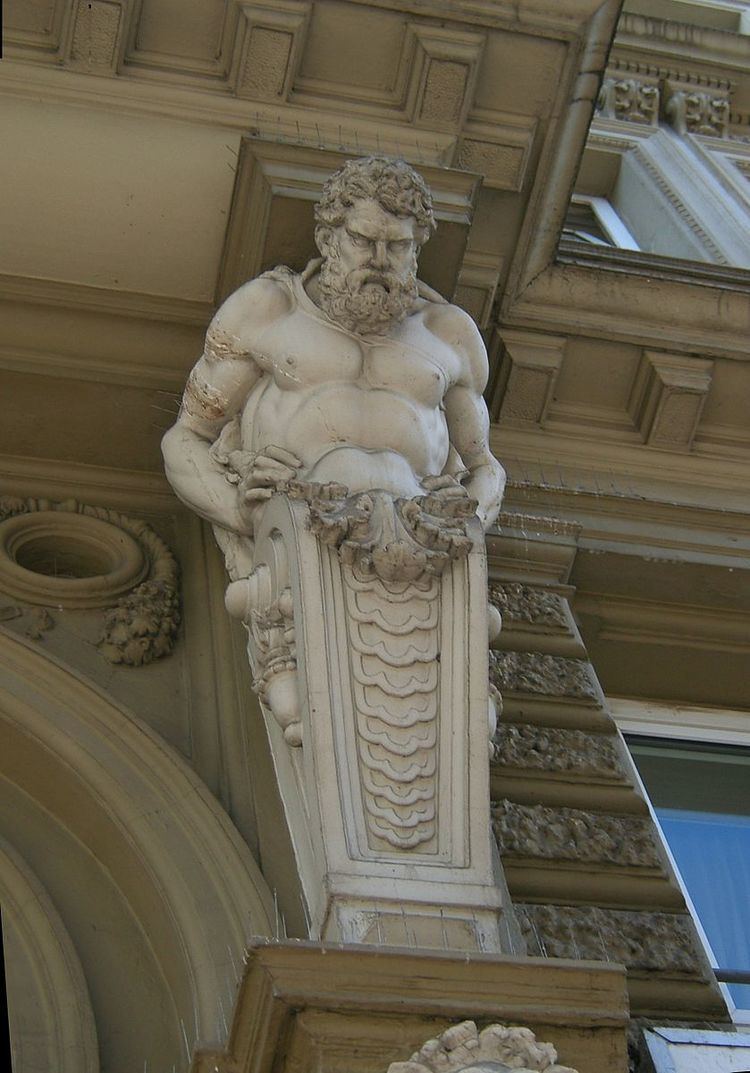 | ||
In classical European architecture, an atlas (also known as an atlant, or atlante or atlantid; plural atlantes) is a support sculpted in the form of a man, which may take the place of a column, a pier or a pilaster. The Roman term for such a sculptural support is telamon (plural telamones or telamons).
Contents
The term atlantes is the Greek plural of the name Atlas – the Titan who was forced to hold the sky on his shoulders for eternity. The alternative term, telamones, also is derived from a later mythological hero, Telamon, one of the Argonauts, who was the father of Ajax.
The caryatid is the female precursor of this architectural form in Greece, a woman standing in the place of each column or pillar. Caryatids are found at the treasuries at Delphi and the Erechtheion on the Acropolis at Athens for Athene. They usually are in an Ionic context and represented a ritual association with the goddesses worshiped within.
Atlantes express extreme effort in their function, heads bent forward to support the weight of the structure above them across their shoulders, forearms often lifted to provide additional support, providing an architectural motif.
Atlantes and caryatids were noted by the Roman late Republican architect Vitruvius, whose description of the structures, rather than surviving examples, transmitted the idea of atlantes to the Renaissance architectural vocabulary.
Origin
Not only did the Caryatids precede them, but similar architectural figures already had been made in ancient Egypt out of monoliths. Atlantes originated in Greek Sicily and in Magna Graecia, southern Italy. The earliest surviving atlantes are fallen ones from the Early Classical Greek temple of Zeus, the Olympeion, in Agrigento, Sicily. Atlantes, however, have played a more significant role in Mannerist and baroque architecture.
During the eighteenth and nineteenth centuries, many buildings were built with glorious atlantes that look much like the Greek ones. Their selection from the two proposed designs—the other design using Caryatids—for the entrance of the Hermitage Museum that was built for Tsar Nicholas I of Russia made atlantes become even more fashionable. The portico of this building has ten enormous atlantes, approximately three times life-size, carved from Serdobol granite, which were designed by Johann Halbig and executed by the sculptor, Alexander Terebenev.
